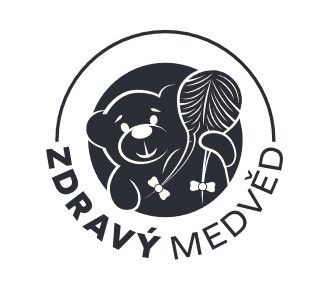Synonym: β-glucans
Characteristics: β-glucans are a natural part of the cell walls of bacteria, fungi, yeast, and cereals such as oats and barley. Each type of beta-glucan contains a different molecular structure, level of branching and molecular weight, which affects its solubility and physiological effect. In layman's terms, the beta-glucans of cereals, bacteria, yeast, and medicinal mushrooms will have a different effect because they differ from each other in structure. One of the most common sources of β(1,3)D-glucan for use as a dietary supplement comes from the cell wall of baker's yeast (Saccharomyces cerevisiae). These β-glucans contain a 1,3-carbon backbone with 1,6 carbon side branches. Beta glucans are used in traditional medicine, for example in Japan, where they have been studied for many years for their potential use as immunomodulators. Traditional Chinese and Asian medicine uses medicinal mushrooms, while in the United States, research has focused on the immunomodulatory effects of yeast-derived zymosan. Recent studies have largely focused on a preventive role in cancer and diseases related to the cardiovascular and immune systems. It has been confirmed that the intake of at least 3 g per day of oat fiber with β-glucans reduces the level of LDL cholesterol in the blood and thus can reduce the risk of cardiovascular diseases. β-glucans are also used as texturizing agents in various nutraceutical and cosmetic products.
Ingredients: Beta glucans are carbohydrates; specifically, they are polymers of glucose units, either linear (with beta-1,3-glycosidic linkages) or branched with side chains (with beta-1,6-glycosidic linkages). Mushroom beta-glucans and the cell wall of baker's yeast are composed of D-glucose with beta-1,3 linkages and beta-1,6 side branches, while the composition of cereal beta-glucan is unbranched and contains beta-1,3 and beta-1,4- glycosidic bonds. The frequency, location, and length of side chains may play a role in immunomodulation. Differences in molecular weight, shape and structure of β-glucans determine differences in biological activity.
Absorption: Beta glucans are not digested and thus slow down the passage of food in the intestines. As a result, carbohydrates are absorbed more slowly, resulting in more stable blood sugar levels. β(1,3)-glucans and similar compounds are transported across the intestinal cell wall to the lymph, where they interact with macrophages and thus activate immune function.
Dietary supplements: Manufacturers obtain beta-glucans from baker's yeast or medicinal mushrooms.
Natural sources: Among the richest sources of beta-glucans are cereals, many types of mushrooms, yeast, and seaweed. Beta glucans are mostly found in oats, barley, rye and sorghum. Mushrooms are good sources: oyster mushroom, reishi (lingzhi), shiitake, chaga and maitake. Cooking reduces the content of beta-glucans.
Effect: Meta-analyses of clinical studies have confirmed the effect of cereal beta-glucan in adjusting the lipid profile. Beta glucan prevents the absorption of cholesterol from food and thus helps to reduce its level in the blood. Other studies mention the potential of lentinan in gastric cancer therapy, highlighting the beneficial effects of beta-glucan extract on glycemic control and insulin sensitivity, wound healing ability, as well as antimicrobial and immunomodulatory activity. Beta-glucan supplementation as an adjuvant to chemotherapy in patients with a variety of advanced malignancies is well tolerated and may have beneficial effects. However, it must always take place after an agreement with an oncologist!
Deficiency: There is a lack of data monitoring beta glucan deficiency. There is also no specific recommended dietary allowance for beta-glucans.
Recommended Daily Dose: Doses used in studies for oat beta-glucan range from 2 to 6 grams taken orally daily for up to 12 weeks. According to the FDA, 3g of beta-glucan per day is the amount needed to lower cholesterol. For yeast-derived beta-glucan, doses ranging from 250 to 500 mg once daily for up to 12 weeks have been used.
Side Effects: Beta glucan is generally considered safe. Eating too much fiber can cause gas.
Interactions: Beta glucans can increase the activity of the immune system. Therefore, it is not recommended to use with drugs that are used after transplantation or reduce the activity of the immune system.
Pregnancy: Due to lack of information, use is not recommended.
Breastfeeding: Due to lack of information, use is not recommended.
Toxicity: No toxicity, carcinogenicity or teratogenicity has been reported.



